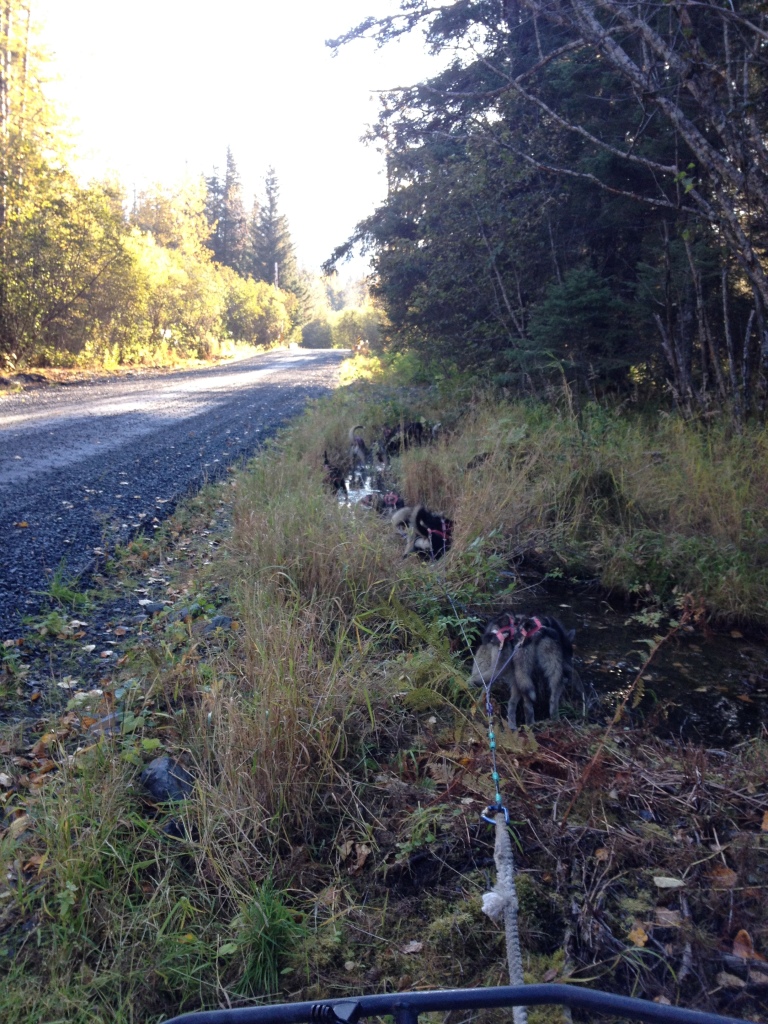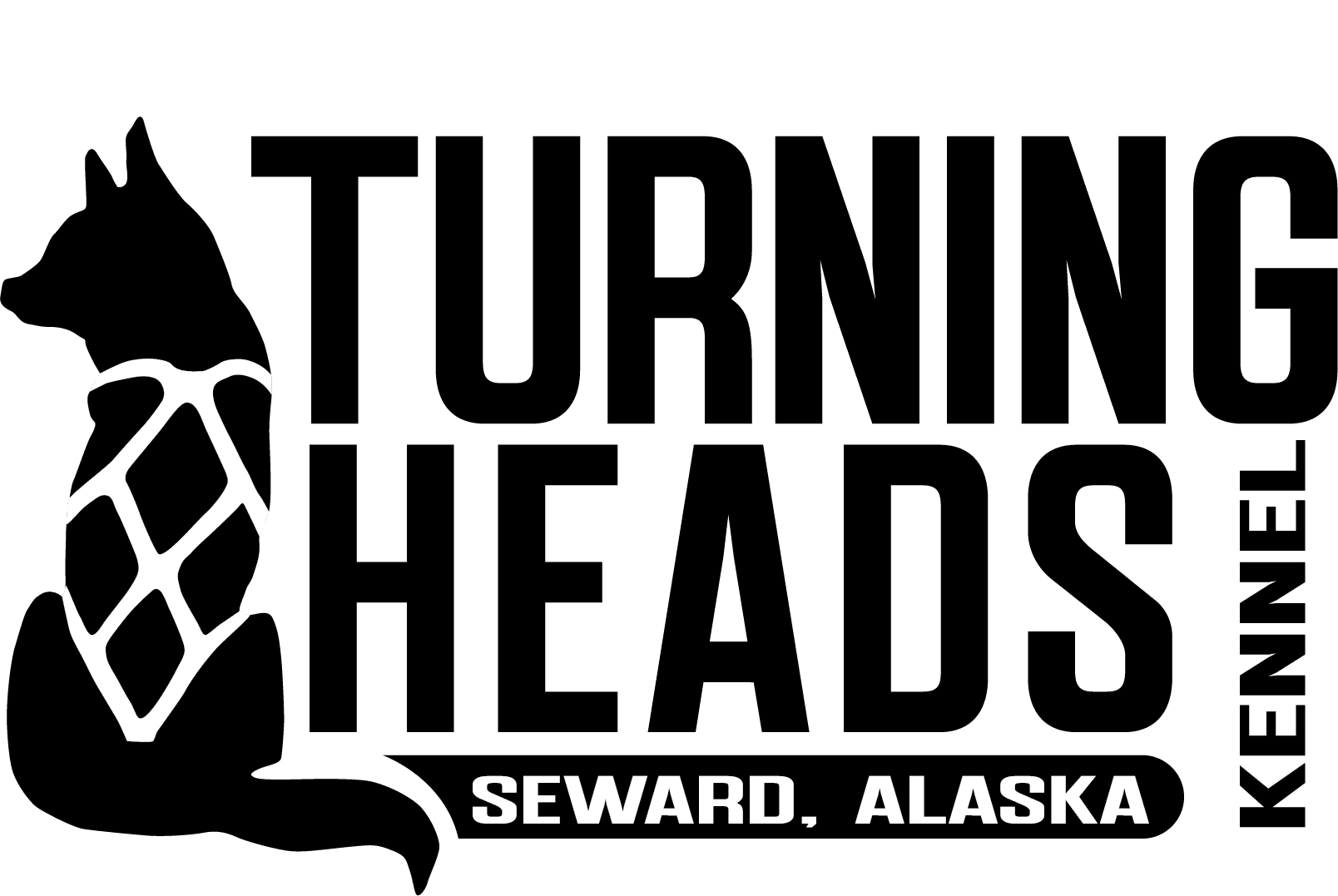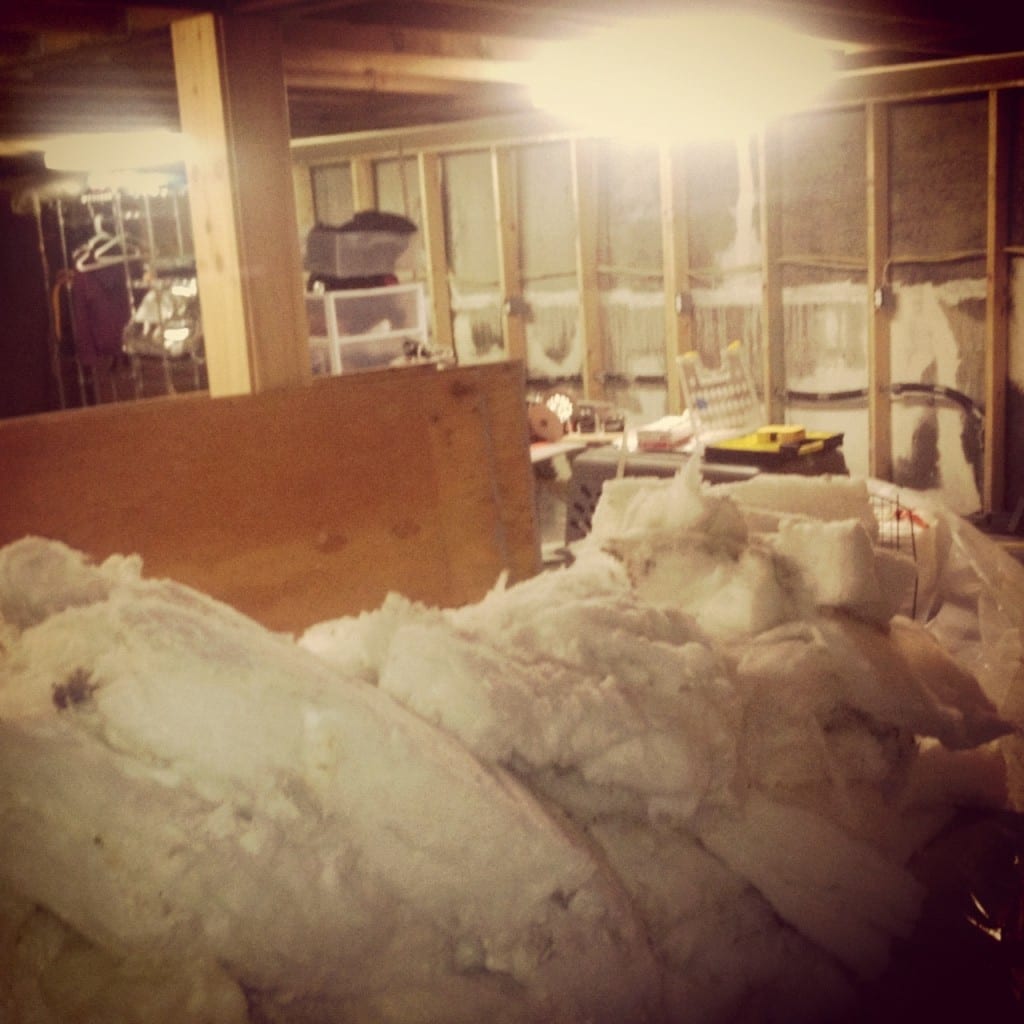Although it is called “dog sledding,” much of the important training that happens to a competitive dog sled team actually happens in the fall on ATVS or carts long before there is any snow. While perhaps strange to those unfamiliar with the sport, fall training provides a crucial first look at the team a musher has to work with for the coming season and puts on the early fitness foundation required for later success.
Most mushers generally start fall training some time during the month of September. Our kennel generally starts towards the end of the month as many of our dogs run all summer long doing dog sled tours and a few weeks off between the last tour and the official start of the season are needed for both dog and musher alike. After a few weeks, however, it is back to training. A team, especially one training for Iditarod, needs to build a solid conditioning foundation and this often takes several months to accomplish.
Iditarod is a 1,000 mile long dogsled race but at its core, is really nothing more than a canine marathon. The race is an endurance event that requires high levels of physical fitness and mental preparation from both the dogs and the mushers that run it. Just as humans need months to prepare for a marathon, our dogs require several months of training before they set out on Iditarod.
Training Sled Dogs: The First Few Runs
Fall training starts out in incremental steps where we slowly build mileage up for our dogs. First runs generally are between 5-7 miles in length and are highly dictated by the weather: huskies cannot run in warm weather so most runs are done in the early morning or at night, when temperatures are coolest. Often, these runs require numerous stops that allow the dogs time to pant so that the dogs can get rid of excess heat. Mushers also cater their training runs to hit water sources such as rivers, streams, or even large puddles where the dogs can drink and cool off.

Training Sled Dogs On ATVS
All-Terrain-Vehicles (ATVs) are equipped with numerous features that allow mushers to maintain maximum control of their team during fall training. The ATV is a good choice because we have both gas and brakes at our disposal as training tools. The ATV can also be put into various gears to determine how much the dogs will pull. When put into 1st gear, the dogs have to pull against the gears of the machine making for a tougher pull. Higher gears ease the pull and allow the dogs to travel faster by having to pull less. Generally, mushers vary gears throughout training.
We primarily run in 2nd and 3rd gear as well as neutral but will occasionally put the ATV in 1st gear and require the dogs to do some tough pulling. Other mushers, of course, do it differently.
Training early on in the season allows mushers to look at their dogs with fresh eyes from the previous season. With another year on their belt, dogs that previously ran in the team may now show qualities that warrant their training as a lead dog. In the fall, we run enough short runs that it is a great chance to try new dogs up front.
Positioning Sled Dogs in the Team
The fall is also a good time to bring younger dogs up onto the main team. During the fall, we spend run after run looking at how we match our dogs and where we place them in the team to maximize our efficiency.
For example, earlier this week I ran a dog named Cricket towards that back of the team. No matter what speed we traveled at, Cricket always trotted. As a young, energetic but smaller dog, if she is going to make our race team it will probably be as a lead dog. Knowing this later in the week I ran Cricket behind our swing dogs. I wanted to give her more experience up near the front of the team where, some day, she will hopefully end up. Up that far, Cricket trotted but whenever we started moving at a faster pace she loped. Our travelling speeds were no different than the run I had taken her out on earlier in the week. The team was also identical. The only thing that changed was Cricket’s position and that, it seemed, affected her gait. In general, we want our dogs to maintain a nice steady trot. Does this mean I will run Cricket in the back of the team? No, it means I need to work with her so that she can have her smooth trot further up in the team.
Chemistry: Finding The Right Match for Sled Dogs
In dog sledding, finding the right match for your dogs is also important. A good pairing of dogs can bring the best out in each dog while a bad pairing can bring out the worst. Often, we find that dogs can be paired with one or two other dogs. We aren’t talking about getting along: all of our dogs get along well. When we talk about pairing, we talk about having two dogs that work and move in sync and that also motivate each other to work hard.
Ideally, we want a team that moves as a single unit, rather than as 16 disjointed pieces. A well-trained dog team should move in sync, the legs of the dogs moving synchronously so that as one dog swings his front legs forward, they all do. Having good pairs is important because it is the pairings that comprise the team. Mushers often talk, admire, and want beautifully gaited dogs because the dog is the first building block of smooth team.
Moving Sled Dogs Around
In training sled dogs, especially in the summer during tours and in the fall when we are more focused on short runs, we can try many new pairings. Many mushers like to move dogs around during runs but we generally do not do that in our kennel. We want our dogs to know that if they are hooked up in a certain position or next to a certain dog they will finish the run in that position next to their partner.
There are some exceptions to this, of course, but most of those involve working with young dogs. With young dogs, our goal is to focus on making their time out on the trail positive and to inspire confidence. This is no different than we do with young kids: we don’t start off pitching curve balls to first graders, they hit a ball off of stand. We make things as easy as possible for our young dogs and build their confidence thus setting them up for success later on in their careers.
How Do We Pick Sled Dog Pairings?
So if pairings are so important, how do we pick them? Really talented mushers usually just know after a few runs. These are the dog-savy people who just innately have a gift of understanding and communicating with dogs. For the rest of us, it’s trial and error. Often, there are many clues that dogs will run well together. Typically littermates or dogs from similar genetic backgrounds will run well together as, genetically speaking, they should have similar builds. Similarly sized dogs also generally do well together. Other than that, it requires assessing a dog’s gait. Believe it or no, most top mushers do not have perfectly gaited dogs — what they have is well-paired dogs.
Training Sled Dogs: Finding A Lead Dog
The fall also lends itself as a great time to train new lead dogs as the control of the ATV makes it easy if problems arise or commands are perfectly followed. We say “finding” new leads dogs as, with any leader, the dog must have certain traits that cannot be trained into it. Lead dogs are generally some of the most eager to run dogs on a team as well as the most athletic. While most people believe that intelligence is important, it is actually the least important trait that our leaders have.
In our kennel, we look for three traits: athleticism, attitude, and aptitude. In some dogs, these traits stand out in a dog even as a young pup – at that time it’s clear this dog is a leader and should begin some form of leader training. Other dogs, however, mature into having the all-star can-do-it attitude that mushers look for and rely on in their lead dogs.
In any event, when we find lead dogs training them in their initial runs in lead on an ATV can be very beneficial as the ATV maximizes our ability to reward our dogs. Our dogs naturally want to run and pull – they wouldn’t be sled dogs if they didn’t – so training a lead dog is all about channeling that pull in the right direction. The commands we use in mushing are “gee” for right and “haw” for left.
Using the ATV, we can reward the dogs when they get a command correct by giving the ATV a little gas. If the dogs do not get the command right, we simply stop the team. Because these dogs want to run and because they hear us talking to them, they will try to do something different – like try a different direction – to see if that produces their desired result which is, of course, to resume running. That is it. That is the great secret to training commands to our lead dogs. While it takes lots of patience, we aren’t doing anything extraordinary. We are simply using our dogs love of running as positive reinforcement.
Why Is Training Sled Dogs In Th Fall So Important?
Fall training is important because it is a time of trying new things and getting back in the groove of training. Properly conditioning the dogs for long distance events such as Iditarod is important and requires that mushers start months in advance so that when it is time to race, the dogs are at their peak physical condition and have a solid foundation. It is also the start of that season’s adventures and we are always excited with possibility about what our team will be able to accomplish in the months to come.
You can learn more about fall training from an earlier post we did: Fall Training For Sled Dogs.
Seppala Kennel‘s also has an excellent post about the progression of training from fall to winter.


